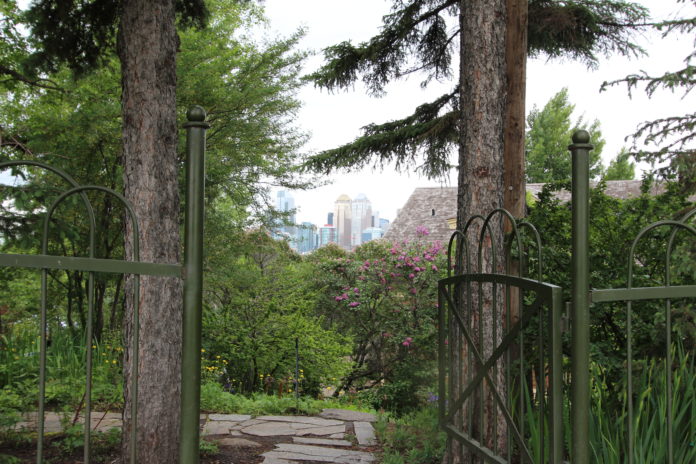339 25 Avenue SE
This month, we’re looking at Reader Rock Garden. In 2018, Reader Rock was recognized as a National Historic Site, with the official plaque being unveiled on May 21, 2019, making this the perfect time to dive into its history, and the work that went into creating, maintaining, and restoring the garden. Fair warning, it’s a bit of an emotionally tumultuous ride for Reader Rock Garden…
Reader Rock Garden is named after William Roland Reader, superintendent of the City of Calgary’s Parks Department from 1913 to 1942. As superintendent, Reader advocated for the development of recreational spaces, as well as the beautification of the city; he lined the streets with trees, expanded the area of city parks, and designed playgrounds and sporting areas. In 1913, five years after he and his family moved to Calgary from England, Reader took up residence in a home built on land occupied by Union Cemetery. Spooky.
Upon moving in, Reader began adding rocks to the hillside near his home to prevent potential erosion, marking the informal beginning of Reader Rock Garden. As the design advanced, the garden became an example of the British Arts and Crafts Movement, which was based on the aesthetic appreciation of the decorative arts. Reader also took the advice of William Robinson, a prominent British gardener, who advised him to maintain the naturalistic rocky appearance in the area to challenge the notion that gardens need to include formal elements to be appreciated. Once established, entrance to the garden was by invitation only, so guests would ‘bribe’ Reader with rocks to add to his collection in exchange for access. Hailed as a horticultural expert, Reader would bring seeds from locations around the world to test them in his garden in an attempt to see which species could survive in Calgary’s difficult climate. It is estimated that between 3000 and 4000 species of plants and flowers have called Reader Rock home since 1913.
This is where the story takes a turn…Reader retired from the City of Calgary Parks Department in 1942, and was scheduled to vacate his home, and beloved garden, by the end of 1943. In April of 1943, William Reader had a heart attack and passed away, which many believed to be a result of a broken heart due to leaving his garden behind. In a fitting, but equally heartbreaking conclusion, Reader was buried next door in Union Cemetery, almost as if to continue to watch over his garden eternally. Due to the cost of heating, Reader’s home was torn down in 1944. Additionally, no one was able to care for the garden the way that Reader did, causing it to fall into disrepair, and killing 80 to 90 percent of the plants. I swear, despite this incredibly sad chunk of time, Reader Rock Garden does bounce back!
In March of 2004, the Reader Rock Garden Park Restoration was proposed, and was approved in April of the same year. The goal of the project was to restore and rebuild the garden with historical accuracy, which was achieved through the implementation of standards and guidelines that were enforced throughout construction. Any new work had to be visually compatible with the original look to maintain cohesiveness. Reader’s home was replicated and rebuilt in the same spot (presumably with better heating), and is now used as a café and classroom space for educational programs. See – I told you it’s fate would improve.
Reader Rock Garden officially reopened in May 2006, in the middle of its mid-March to mid-November blooming season. In 2006, it received the Provincial Historical Resource Designation, and in 2019, the Government of Canada declared the garden a National Historic Site, describing it as “one of the most successful horticultural gardens in Western Canada” that showcases “horticultural, ecological, and aesthetic possibilities of gardening in the cold winters and dry summers of Calgary.” Between the stone pathways lined with flowers, a bridge overlooking a small waterfall, and endless greenery, Reader Rock Garden provides the perfect backdrop for photos. It’s definitely worth the visit. I hope you enjoy it, and that you can appreciate all that has gone into crafting such a beautiful spot.
Information courtesy of the City of Calgary Inventory of Historic Resources.










